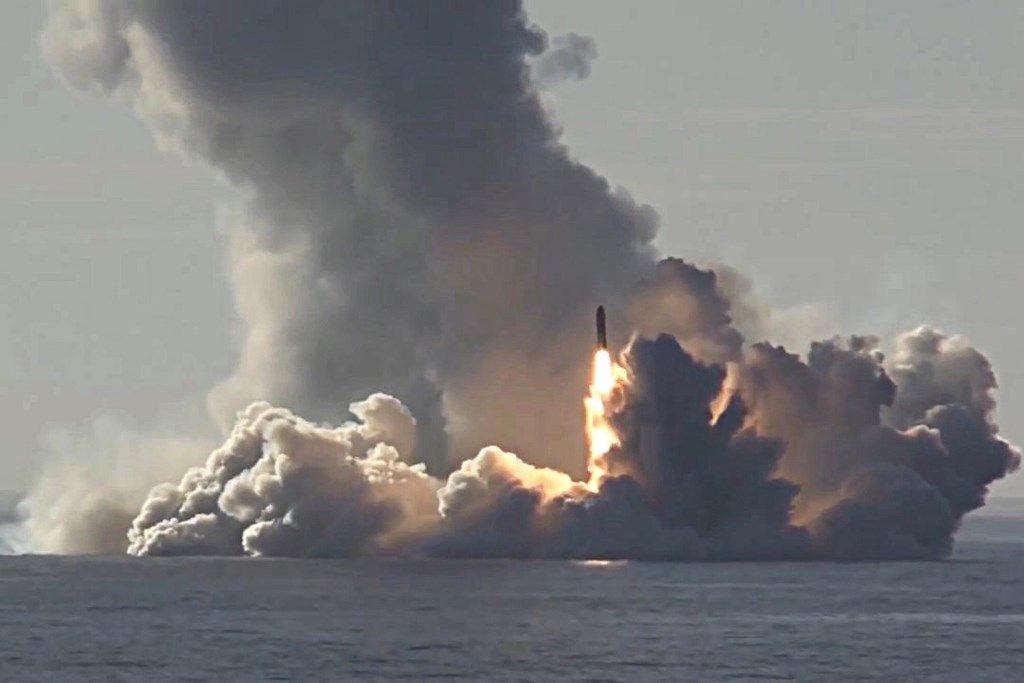Results of the U.S. Nuclear Posture Review

On 2 February, the U.S. released a report on its Nuclear Posture Review (NPR), developed in a process led by the Department of Defense and including the State and Energy Departments. The report provides guidance for U.S. nuclear strategy and recommendations for changes in America’s nuclear forces. It is the fourth NPR, each time concluded at the beginning of a new presidency. Budgetary decisions in Congress will have a key impact on implementation of the NPR.
Change of Priorities
The new NPR identifies deterrence of attacks on the U.S. or its allies and partners as a top priority, with other elements of U.S. nuclear policy subordinated. This marks a strategic shift from the 2010 document, which placed the prevention of nuclear proliferation and nuclear terrorism atop the U.S. agenda. To induce other countries to closer cooperation in advancing those goals, the administration under President Barack Obama reduced the number of nuclear weapons and their role in U.S. security policy. It also strived to enhance dialogue and cooperation on nuclear issues with Russia and China.
The lack of reciprocal restraint in nuclear policy by both Russia and China and their increasing geopolitical rivalry with the U.S. are listed in the new NPR as the main reasons for the changes. Russia has issued nuclear threats towards NATO members. Both Russia and China have been developing additional nuclear delivery systems while also modernising their existing arsenals. The report also points to the acceleration of North Korea’s nuclear programme and the uncertainty about the nuclear agreement with Iran. These developments forced a partial policy correction in Obama’s second term, including higher visibility of deterrence, but the shift in the new NPR is much more pronounced.
While the report underscores the importance of non-proliferation and arms control, it gives them much less space than in 2010. It argues that conditions for further reductions of nuclear arms do not currently exist, pointing to, among other issues, Russia’s fielding of a ground-launched cruise missile in violation of the Intermediate-range Nuclear Forces (INF) Treaty. The NPR also notes that after signing the 2010 New START Treaty Russia rejected offers to further reduce strategic forces (i.e., intercontinental range) and to negotiate cuts in its large inventory of non-strategic nuclear weapons (around 2,000 warheads according to the U.S. government).
Deterrence of Limited Nuclear Attacks
The NPR emphasises the flexibility of U.S. nuclear forces and tailored deterrence strategies for a broad spectrum of adversaries and scenarios. It sees the main danger as nuclear escalation, or the threat thereof, aimed at deterring the U.S. and its allies from reacting to a regional conflict or coercing them to cease fighting on the aggressor’s terms. Most attention in the NPR was paid to Russia’s apparent readiness to use a limited number of low-yield warheads against NATO. The basis for this assessment includes various Russian military exercises. According to the NPR, Russia mistakenly believes that the U.S. would not respond to such an attack with higher-yield warheads, placed on intercontinental ballistic missiles (ICBMs) and submarine-launched ballistic missiles (SLBMs), in fear of massive retaliation against U.S. territory. The report also assesses that current U.S. delivery systems of low-yield warheads might find it challenging to penetrate increasingly advanced air defences. This also applies to the U.S. and allied dual-capable aircraft (DCA) assigned to American B61 bombs stationed in Europe (around 150 warheads, according to SIPRI estimates). New F-35A fighters are to replace the U.S. DCA—and at least those of some other allies—in the mid-2020s. The NPR additionally suggests the need to improve the readiness of current NATO DCA and their protection from pre-emptive strikes.
In effect, the U.S. is to develop two additional nuclear capabilities to broaden its options to respond to a limited attack. In the near term, it plans to lower the yield of a “small number” of existing warheads on strategic SLBMs. In the longer term (7–10 years), also with the use of existing warheads, the U.S. plans to develop a non-strategic sea-launched cruise missile (SLCM). It will be most likely based on submarines, like the nuclear variant of Tomahawk missiles (around 350 were produced), which were withdrawn into reserve in 1992 and retired after 2010. SLCMs would be more difficult to detect in flight than SLBMs and would be deployed closer to their potential targets, including in Asia, where the U.S. does not permanently station its nuclear forces. An SLCM would also be a bargaining chip in attempts to pressure Russia to reduce its non-strategic nuclear forces and return to compliance with the INF treaty.
Non-nuclear Threats and Forces
The NPR pays substantial attention to the growing non-nuclear capabilities of U.S. rivals that could be used for attacks of strategic consequence. The report clarifies the “extreme circumstances” that might justify first use of nuclear weapons by the U.S. As in 2010, it applies strictly to other countries possessing nuclear weapons as well as those who are either not party to the Nuclear Non-Proliferation Treaty (NPT) or violate it. The types of significant attacks listed in the NPR include those on the U.S., allied, or partner civilian population or infrastructure, as well as on U.S. or allied nuclear forces and their command-and-warning systems. It includes cyberattacks in addition to conventional, chemical and biological strikes listed in the 2010 report. Thus, the NPR breaks from a policy of decreasing the role of nuclear weapons in deterrence in favour of conventional forces. In line with the U.S. position from 2015–2016, though, the NPR recommends the integration of NATO nuclear and non-nuclear exercises to prove that these forces can conduct joint operations when faced with an adversary’s use of nuclear weapons. It also mentions greater non-nuclear support as one way for the broader involvement of allies in NATO’s nuclear mission.
Modernisation of Strategic Forces
The NPR confirms the continuation of an Obama administration-initiated programme to modernise the strategic triad—ICBMs, submarines carrying SLBMs, and heavy bombers. Most of them were developed or fielded in the 1970s and 1980s and, according to the NPR, extending their service life further would reduce their effectiveness. It calls for these systems to be replaced over the next three decades with newer ones, which also applies to cruise missiles carried by bombers. Under current plans, the U.S. is to maintain its strategic forces at levels permitted by the New START Treaty, involving up to 1,550 deployed warheads and 700 deployed delivery systems, even after it expires in 2021 (although there is the possibility it could be extended another five years). At the same time, the NPR signals the U.S. readiness to dissuade potential adversaries from nuclear rivalry. The U.S. is to maintain the ability to deploy reserve warheads but also to regain the ability to produce new warheads. It also seeks the capability to rapidly develop new delivery systems.
Implications for NATO
The NPR’s recommendations on NATO nuclear forces would strengthen their effectiveness and should receive Poland’s support. Overall, the changes in the U.S. nuclear policy, however, will complicate discussions on that matter, especially considering President Trump’s controversial remarks, such as the nuclear threats he’s made against North Korea. In many European countries, this might raise concerns of an arms race or lower threshold for nuclear use.
Alleviation of these concerns will depend greatly on the effectiveness of U.S. strategic communication in Europe. The aim of the development of two additional capabilities is to underscore that any nuclear use would be met with a response and will result in “incalculable and intolerable costs” for Russia. The NPR and statements by Pentagon leadership are thus in line with NATO’s nuclear rhetoric from the Warsaw summit. Moreover, the SLCM will not offset the overall disparity in non-strategic nuclear forces between the U.S. and Russia and American strategic forces are not planned to be expanded. At the same time, the NPR indicates that progress in arms control will not be possible without Russia’s return to compliance with the INF treaty—a requirement that calls for greater activity by European NATO members in that matter.





